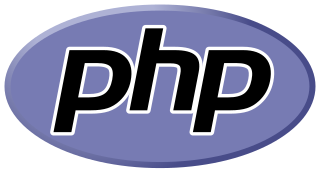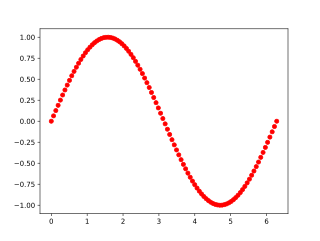
MATLAB is a proprietary multi-paradigm programming language and numeric computing environment developed by MathWorks. MATLAB allows matrix manipulations, plotting of functions and data, implementation of algorithms, creation of user interfaces, and interfacing with programs written in other languages.

PHP is a general-purpose scripting language geared towards web development. It was originally created by Danish-Canadian programmer Rasmus Lerdorf in 1993 and released in 1995. The PHP reference implementation is now produced by the PHP Group. PHP was originally an abbreviation of Personal Home Page, but it now stands for the recursive initialism PHP: Hypertext Preprocessor.

Lua is a lightweight, high-level, multi-paradigm programming language designed primarily for embedded use in applications. Lua is cross-platform, since the interpreter of compiled bytecode is written in ANSI C, and Lua has a relatively simple C API to embed it into applications.

GNU Octave is a scientific programming language for scientific computing and numerical computation. Octave helps in solving linear and nonlinear problems numerically, and for performing other numerical experiments using a language that is mostly compatible with MATLAB. It may also be used as a batch-oriented language. As part of the GNU Project, it is free software under the terms of the GNU General Public License.

Maple is a symbolic and numeric computing environment as well as a multi-paradigm programming language. It covers several areas of technical computing, such as symbolic mathematics, numerical analysis, data processing, visualization, and others. A toolbox, MapleSim, adds functionality for multidomain physical modeling and code generation.

NumPy is a library for the Python programming language, adding support for large, multi-dimensional arrays and matrices, along with a large collection of high-level mathematical functions to operate on these arrays. The predecessor of NumPy, Numeric, was originally created by Jim Hugunin with contributions from several other developers. In 2005, Travis Oliphant created NumPy by incorporating features of the competing Numarray into Numeric, with extensive modifications. NumPy is open-source software and has many contributors. NumPy is a NumFOCUS fiscally sponsored project.
IronPython is an implementation of the Python programming language targeting the .NET and Mono frameworks. The project is currently maintained by a group of volunteers at GitHub. It is free and open-source software, and can be implemented with Python Tools for Visual Studio, which is a free and open-source extension for Microsoft's Visual Studio IDE.
A source-code-hosting facility is a file archive and web hosting facility for source code of software, documentation, web pages, and other works, accessible either publicly or privately. They are often used by open-source software projects and other multi-developer projects to maintain revision and version history, or version control. Many repositories provide a bug tracking system, and offer release management, mailing lists, and wiki-based project documentation. Software authors generally retain their copyright when software is posted to a code hosting facilities.

OpenEMR is a medical practice management software which also supports Electronic Medical Records (EMR). It is ONC Complete Ambulatory EHR certified and features fully integrated electronic medical records, practice management for a medical practice, scheduling, and electronic billing.

PyPy is an implementation of the Python programming language. PyPy often runs faster than the standard implementation CPython because PyPy uses a just-in-time compiler. Most Python code runs well on PyPy except for code that depends on CPython extensions, which either does not work or incurs some overhead when run in PyPy.
CodePlex was a forge website by Microsoft. While it was active, it allowed shared development of open-source software. Its features included wiki pages, source control based on Mercurial, TFVC, Subversion or Git, discussion forums, issue tracking, project tagging, RSS support, statistics, and releases.

Visual Basic (VB) before .NET, sometimes referred to as Classic Visual Basic, is a third-generation programming language, based on BASIC, and an integrated development environment (IDE), from Microsoft for Windows known for supporting rapid application development (RAD) of graphical user interface (GUI) applications, event-driven programming and both consumption and development of components via the Component Object Model (COM) technology.
StyleCop is an open-source static code analysis tool from Microsoft that checks C# code for conformance to StyleCop's recommended coding styles and a subset of Microsoft's .NET Framework Design Guidelines. StyleCop analyses the source code, allowing it to enforce a different set of rules from FxCop. The rules are classified into the following categories:

RPM Package Manager (RPM) is a free and open-source package management system. The name RPM refers to the .rpm file format and the package manager program itself. RPM was intended primarily for Linux distributions; the file format is the baseline package format of the Linux Standard Base.
LiveCode is a cross-platform rapid application development runtime system inspired by HyperCard. It features the LiveCode Script programming language which belongs to the family of xTalk scripting languages like HyperCard's HyperTalk.
Microsoft .NET Gadgeteer is an open-source rapid-prototyping standard for building small electronic devices using the Microsoft .NET Micro Framework and Microsoft Visual Studio/Visual C# Express.
The Outercurve Foundation was an independent 501(c)(6) non-profit corporation founded by Microsoft. Its goal was to "enable the exchange of code and understanding among software companies and open source communities." They ran several software projects, some of which were connected to the .NET Framework.

mpv is free and open-source media player software based on MPlayer, mplayer2 and FFmpeg. It runs on several operating systems, including Unix-like operating systems and Microsoft Windows, along with having an Android port called mpv-android. It is cross-platform, running on ARM, PowerPC, x86/IA-32, x86-64, and MIPS architecture.










